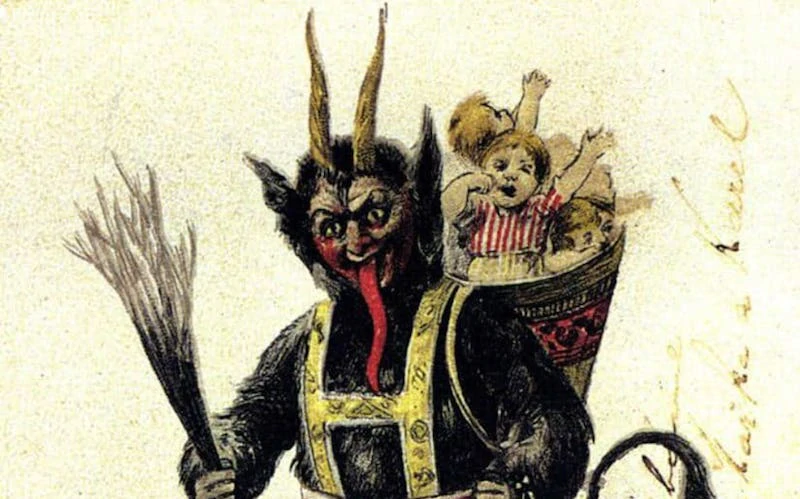Dante’s Inferno is one of the most famous literary works. It tells the story of Dante’s journey through the nine circles of hell.
Each circle represents a different kind of sin, and Dante must face off against the demons that represent them. This epic poem is integral to Italian culture and has been translated into several languages.
What is Dante’s Inferno?
Dante’s Inferno is the first part of a three-part epic poem, The Divine Comedy, by Italian poet Dante Alighieri.
Alighieri was born in Florence, Italy, in 1265. He was exiled from Florence in 1302 after political struggles within Florence after a short-lived victory, being elected to the City Council of Priors in 1300.
Under the threat of execution, he never returned and died in exile. So, there are many parallels between Dante’s Inferno and Dante’s life.
The Divine Comedy is an allegorical story that tells of Dante’s descent into Hell, his journey through Purgatory, and finally, his ascent into Paradise.
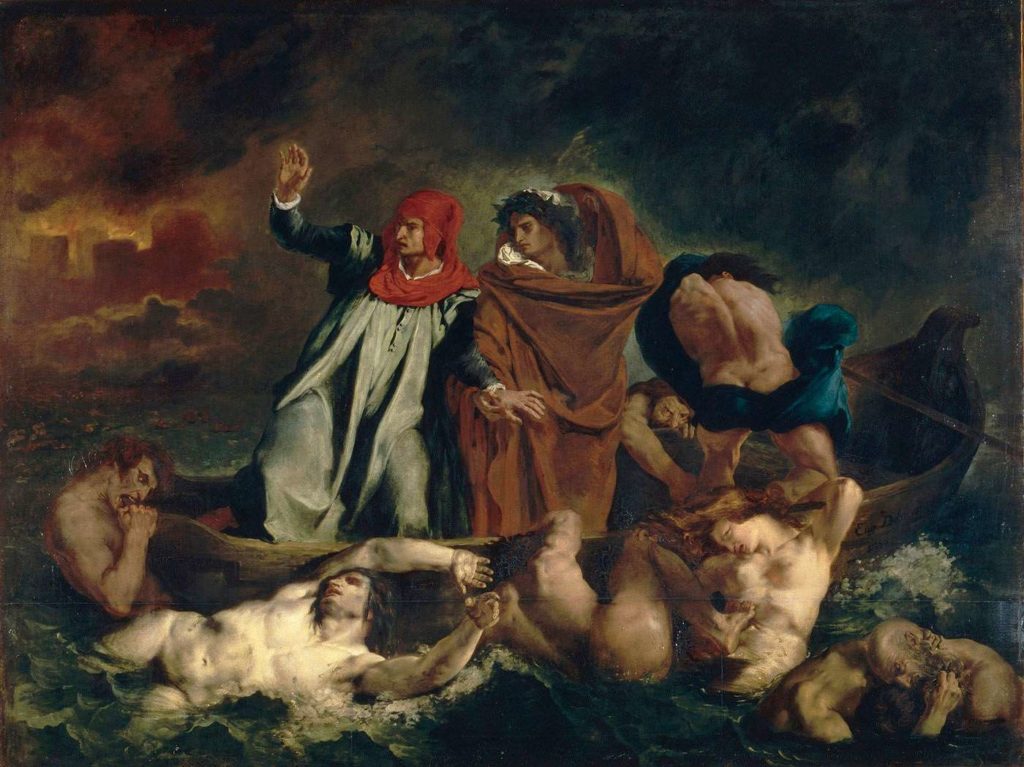
The poem is considered one of the great masterpieces of world literature and influenced literature in Italy and western theology.
Dante was the first to write his work in a rhyming scheme called terza rima, The Divine Comedy in the Tuscan dialect of Italian, and officials didn’t translate it to English until 1802. No one used the title the Divine Comedy until 1555.
The story tells the story of Dante’s descent into Hell with the Roman poet Virgil as his guide. In each circle of Hell, Dante encounters different sinners who are being punished for their crimes.
As the story progresses, it examines the vices of human nature and the ramifications of tragedy, but the lesson acknowledges one’s own sins.
Ultimately, Dante is purified, learns the importance of living a good life, and eventually faces his sins. The story has been adapted into numerous films, TV shows, video games, and other forms of media.
What are the Nine Circles of Hell?
Hell has different meanings in different cultures, but in Dante’s Inferno, it is a place of punishment for sinners.
Each circle of Hell represents a place where sinners receive punishment for eternity for crimes in an area that reflects their sin.
The nine circles of Hell are:
- Limbo
- Lust
- Gluttony
- Greed
- Wrath
- Heresy
- Violence
- Fraud
- Treachery
Dante is accompanied by the Roman poet Virgil, who represents human reason. As they travel through Hell, Dante and Virgil encounter different sinners who are being punished for their crimes.
Each circle represents a different kind of sin, and the punishments reflect the severity of the crimes.
The nine circles of Hell form a concentric shape, and each level down into another circle indicates a gradual increase in the severity of the crimes.
Let’s discuss each ring in more detail.
Limbo
The first circle of Hell is Limbo, where the virtuous pagans reside. Dante and Virgil had to cross the river Acheron on a boat to get there. These people lived exemplary lives but did not accept Christ into their hearts.
No matter how good of a life they lived, they were never baptized and didn’t have the faith to enter the Kingdom of Heaven.
However, these people weren’t sinful and didn’t deserve to be in Hell. So, they were allowed to stay in a neutral place called Limbo, which essentially is the edge or boundary of Hell.
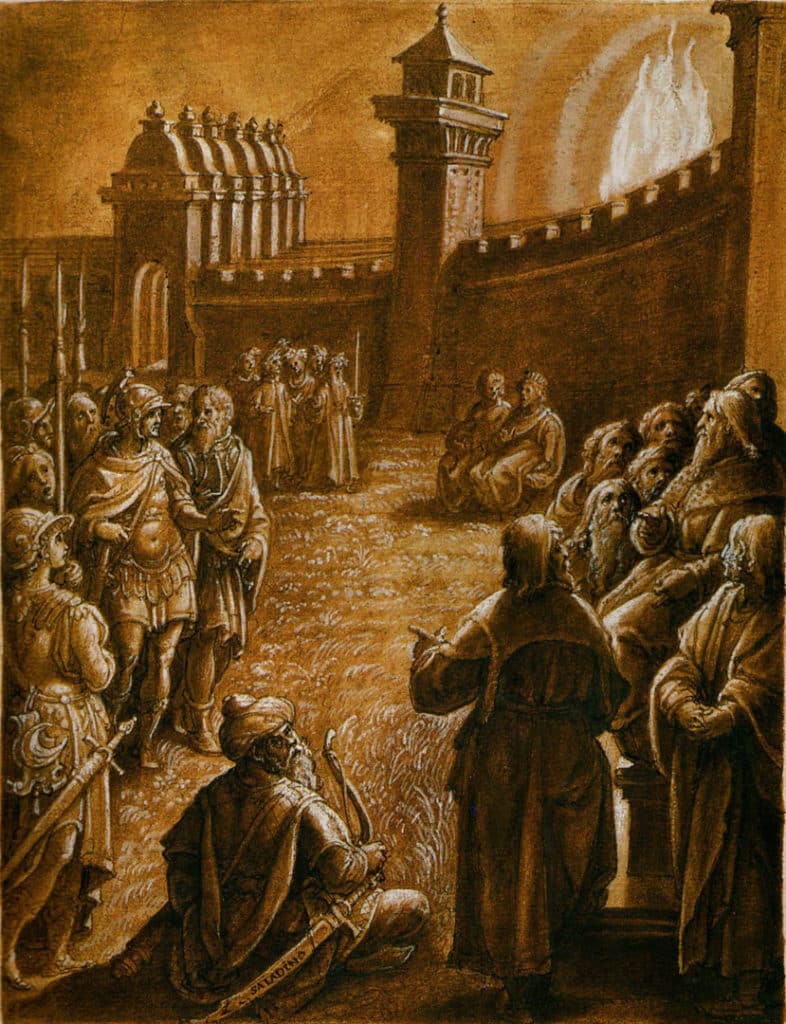
According to the poem, many well-known and influential public figures like Aristotle, Julius Caesar, Hippocrates, Cicero, Socrates, and Homer reside here.
However, there is sadness and melancholy even though people are not subjected to torture.
The souls of the dead in Limbo are unhappy. They won’t be able to go to heaven even if it is nearby.
Lust
Following Limbo comes Lust. As the second circle of hell, people driven by their lustful desires were tormented here. Dante alludes to strong winds blowing in the Second Circle of Hell in the poem.
These harsh winds beat against the rocks and mountains, dragging along any souls unfortunate enough to be caught in its path.
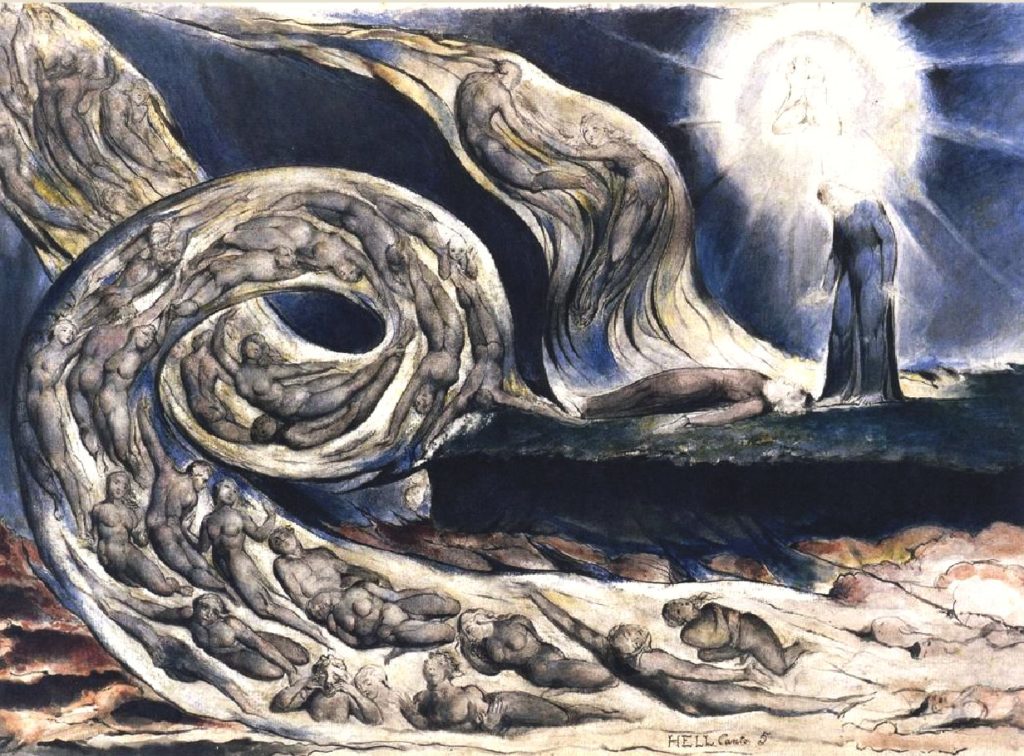
This symbolizes how lustful desires overpower people and drive them to satisfy their cravings endlessly.
Many adulterous individuals appear in the poem, such as Cleopatra, Dido, Helen of Troy, Tristan, Semiramis, and many more. However, Dante considers lust a lesser offense because it involves mutual enjoyment rather than self-centeredness.
This might be why Lust is the Second Circle of Hell, not a more severe one.
Gluttony
The Third Circle of Hell is reserved for the Gluttons and completely contrasts with the Second Circle. In the Third Circle, the souls of those who indulged in voracious feasting and appetite are tortured.
In the Third Circle of Hell, Dante and Virgil find the souls of gluttons overseen by a worm-monster Cerberus. In addition, sinners in this circle are punished by being forced to lie in an unpleasant slush produced by never-ending icy rain.
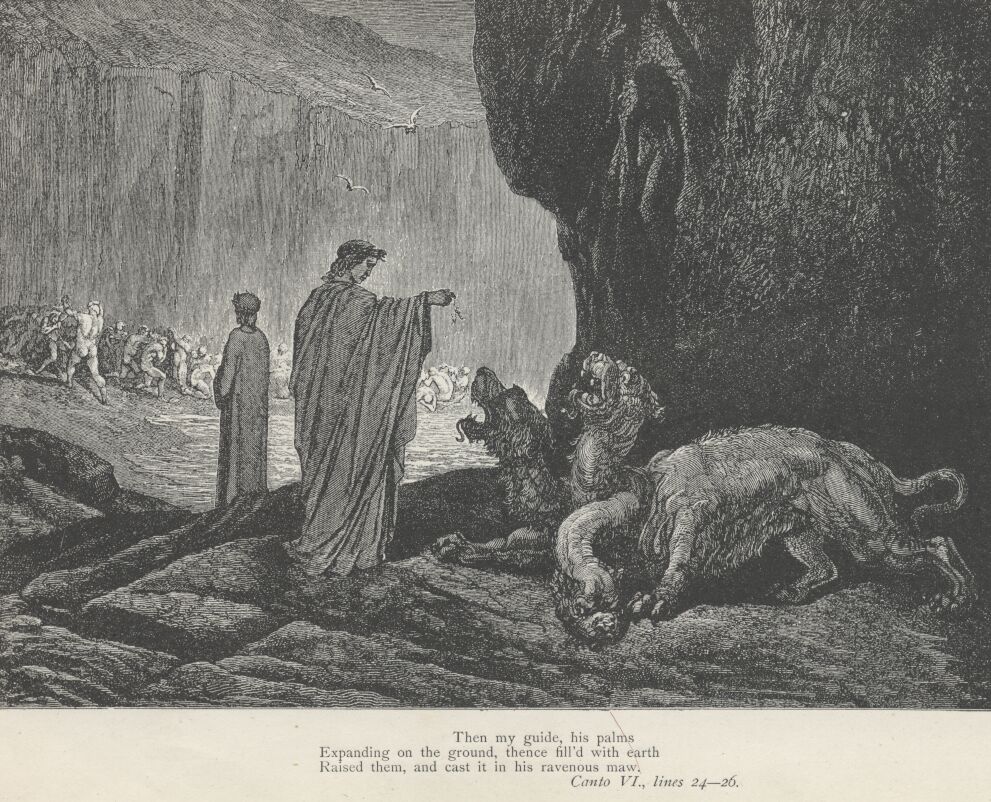
The repulsive slush sign represents the degradation of a person who overindulges in food, drink, and other worldly pleasures.
The gluttons’ selfishness and callousness symbolize their lack of compassion for others. Dante is talking to Ciacco.
The latter predicts that the Guelphs, a faction supporting the Pope, will defeat and drive out the Ghibellines, the coalition supporting the Emperor, to which Dante belonged from Florence.
Greed
In the fourth circle of hell, the punished person is not the one who stole but accumulated without giving. The sinners in this circle are forced to roll enormous weights around and around for eternity.
The constant pushing and pulling of these weights symbolize the endless pursuit of earthly riches and possessions.
The Circle comprises two groups: those who spent lavishly and hoarded the vast imperial wealth, which means nothing in the end.
Plutus, God of Wealth, protects the inner circle of avarice. It consists of Cardinals, priests, and popes that amassed riches and wasteful extravagance and foolishly misused others’ money for their benefit.
To reference it, this circle of Hell exists for people carrying a massive weight on their chest. They choose to suffer to attain higher possession.
The parties’ greed and overindulgence have led them to believe they are owed something, which drives them to continue being greedy. They hoard and squander resources until there is mutual animosity between the two groups.
Wrath
The Fifth Circle of Hell is where the wrathful and the sullen receive eternal punishment. The tortured souls fight continuously in the Styx River. The ones who dwell in this Circle have led their entire lives in a rage.
According to the poem, Dante and Virgil encounter many wrathful people fighting each other violently on the surface of the Stygian river. They fall further into the water based on their furious actions throughout their life. It accurately depicts their life’s wrongdoings.
Those who bottled up their lies and suppressed them live below the surface. The people struggling with deep-seated anger, driving them– those souls will fight each other for eternity.
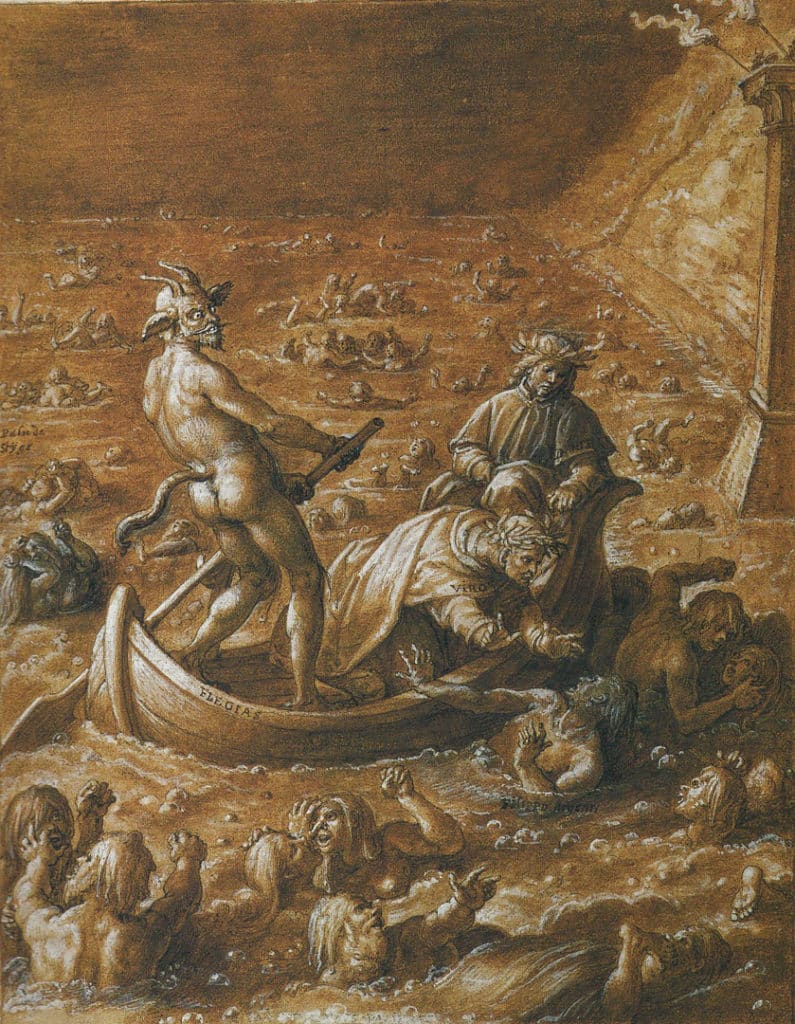
They’ll choke and prevent each from expressing themselves or being honest. The act of self-immolation represents their anger–a fit of rage that, if said, would harm other people.
Virgil and Dante watch this scene safely from a boat controlled by Phlegyas: a wrathful figure who understands the destructive potential of uncontrolled emotions.
Heresy
The sixth circle of Hell is where the sinners who have committed heresy receive punishment, and it also marks the beginning of the lower reaches of Hell.
These sinners are entombed in flaming tombs as punishment for their disbelief and lack of understanding.
The heretics are those who did not believe in God, or more specifically, the Catholic Church. They are confined forever within burning tombs, symbolizing their spiritual blindness and ignorance.
The first group Dante meets is Epicurus and his followers. Epicurus was an ancient Greek philosopher who believed pleasure was the highest good.
His teachings were considered heretical by the Church because they undermined its authority. The second group is Pope Anastasius II, whom Dante accuses as a heretic of his support of the Monophysite heresy.
According to some modern scholars, though, Dante likely meant to condemn Byzantine Emperor Anastasius I as a heretic instead of the Pope.
However, more significant evidence supports the idea that the antagonistic relationship between Dante and the church and his affiliation with the party trying to take power away from the Papal authority led him to include the Pope in his Inferno.
So, it is likely that Dante’s feelings towards the Pope led him to have Pope Anastasius II as a heretic in his Divine Comedy.
As the Church taught, this heresy held that Christ had only one nature instead of two. The last group is a collection of heretics from different periods and places.
Dante then meets Farinata degli Uberti, a political leader from Florence who was excommunicated for his support of the Ghibellines. He predicts that Dante will be exiled from Florence, as he was.
Violence
The seventh circle of Hell is where the sinners who have committed violence endure punishment, but not it isn’t simply a place for murderers and thieves, although there is a place for them here.
This circle is also for those who have committed violence against God, nature, or art. This level has three subdivisions. The first is for murderers and other violent criminals. The second is for those who commit suicide. The third is for those who are violent against God, nature, or art. Some would say blasphemers and sodomites fall into this category.
The first group of sinners in this circle are violent criminals. They are torn apart by wild beasts as punishment for their crimes and dipped in the river Phlegethon of sweltering blood and flames.
This is a fitting punishment because they took lives without any regard for human life and served their bloodlust, so now their own lives are brutally taken from them.
The second group consists of those who committed suicide. They are punished by being denied burial and having to spend eternity in a dark forest as trees or bushes.
If their punishment isn’t bad enough, they are also fed on by Harpies. This is because they denied God’s gift of life, so now they are denied the peace of death.
Their self-hatred turns them into dried-up trees and subjects them to constant bombardment by Harpies who cut them and leave them bleeding, indicating the self-harm tendencies of those who eventually commit suicide.
The third group consists of those who were violent against God, nature, or art. They deserve punishment because they committed crimes like blasphemy, sodomy, and bestiality, and the unfair money lenders are being tortured.
The landscape in this circle of Hell represents a field of misery and torture; a storm of flaking flames falls from the sky as the scorching hot sand burns the offenders for eternity.
Dante and Virgil see the blasphemers wallowing in the sand and the sodomites running around in the background. Money lenders weep in the sand. They are all there because they took something beautiful and ruined its innocent nature.
Fraud
Next, Dante and Virgil venture upon the eighth circle of Hell, reserved for the fraudulent sinners. They reach this part of Hell on the back of a flying creature named Geryon, who, like dishonest people, has many different natures, or in this case, is made up of many other animals.
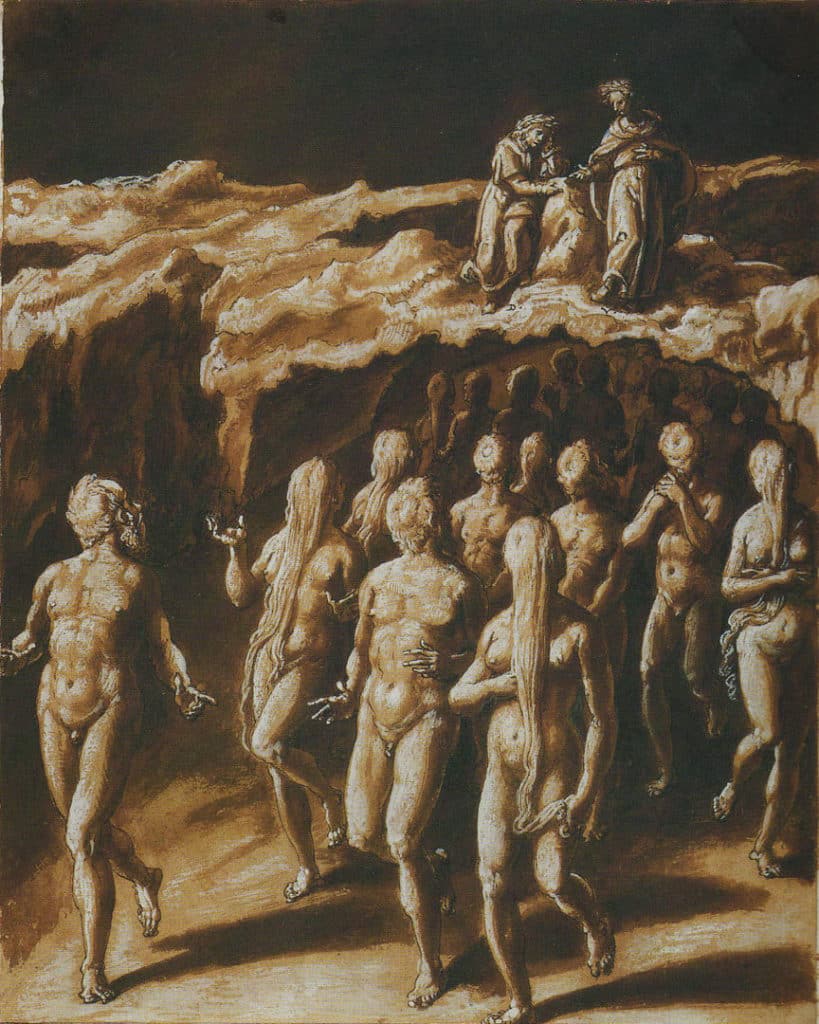
This circle of Hell is divided into ditches or Bolgia with stony bridges between them. Each Bolgia is reserved for a different kind of fraudulent person.
- Bolgia #1 – is a place for seducers and panderers.
- Bolgia #2 – He and Virgil find flatterers in this ditch.
- Bolgia #3 – after crossing a bridge, he comes to the next Bolgia for people who sell pardons or benefits.
- Bolgia #4 – another bridge leads him to a place for sorcerers and false prophets.
- Bolgia #5 – this is the ditch reserved for politicians.
- Bolgia #6 – this is the ditch reserved for hypocrites
- Bolgia #7-10 – There are many hypocrites, thieves, evil counselors, divisive individuals, falsifiers, alchemists, perjurers, and advisers in these ditches.
Treachery
The ninth and final circle of Hell is the home for those who have committed treason. This is also the deepest level of Hell and is located beneath a frozen lake called Cocytus.
There are four rounds within this circle, and each one is colder than the last. Dante names each of the four rounds after an individual who represents sin.
The First Round of the Ninth Circle is called Caina, after Cain, who murdered his brother Abel. The souls of those who betrayed their family and clan are freezing for eternity here. Their necks and heads are above the ice to bow and defend themselves from the piercing cold winds.
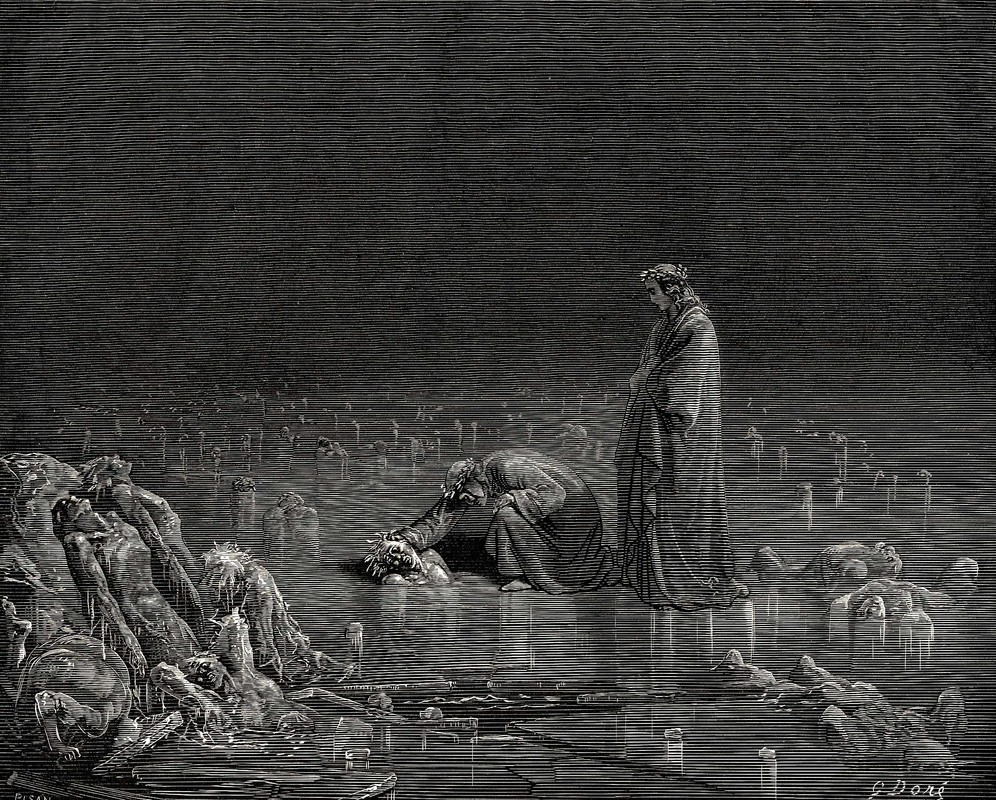
The second layer of the ninth circle is named Antenora, after a Trojan man called Antenor. He brought his city’s downfall by betraying it to the Greeks.
The shades that occupy this space are people who have betrayed their homeland, and they’re being punished for it. Ptolomaea makes up the third round of Dante’s Hell; Ptolemy was an Egyptian king whose gluttony led him to kill his guests at dinner parties. He summoned his father-in-law and sons for a meal and killed them.
Here, those who broke the laws of hospitality are punished. The Fourth Round of Ninth Circle is called Judecca, named after Judas Iscariot. Those guilty of betraying God are frozen into an ugly ice statue. It is eternally silent in this round.”
The Lessons Dante Learned From His Journey
What can we learn from Dante’s Inferno? Although it was written centuries ago, this 14th-century Italian poem is still relevant today. The nine circles of Hell represent the different kinds of sin; each has a lesson to teach us.
Dante’s Inferno is a cautionary tale that reminds us of the consequences of our actions. It is a warning to stay away from vice and temptation and to live a virtuous life.
Dante’s Inferno can also be seen as a representation of the human journey.
We all start in life innocently enough, but as we grow older, we face choices. We can either choose the path of virtue or the way of vice.
If we make the wrong choice, we may end up in one of the nine circles of Hell. But even if we make bad choices, we still have hope.
Just as Dante was able to find his way out of Hell with the help of Virgil, we can find our way back to the path of righteousness. What lessons have you learned from Dante’s Inferno? Share your thoughts in the comments below.

